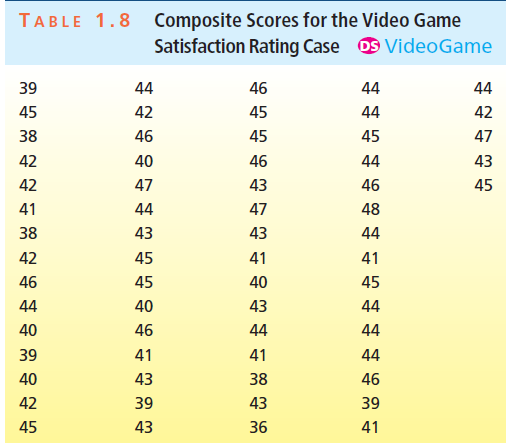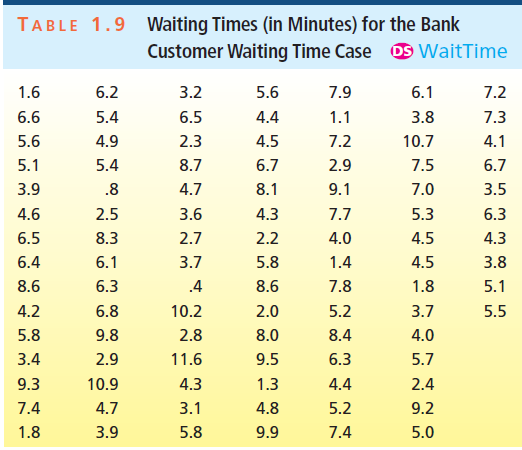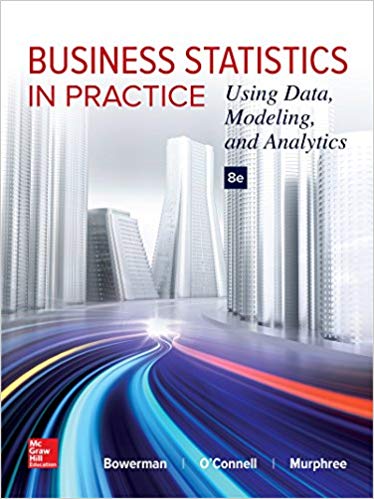A bank manager has developed a new system to reduce the time customers spend waiting to be
Question:

a. Consider the peak business hours from 2:00 p.m. to 2:59 p.m., from 3:00 p.m. to 3:59 p.m., from 4:00 p.m. to 4:59 p.m., and from 5:00 p.m. to 5:59 p.m. on a particular day. Also, assume that a computer software system generates the following four random numbers between 00 and 59: 32, 00, 18, and 47. This implies that the randomly selected times during the first three peak business hours are 2:32 p.m., 3:00 p.m., and 4:18 p.m. What is the randomly selected time during the fourth peak business hour?
b. When each customer is chosen, the number of minutes the customer spends waiting for teller service is recorded. The 100 waiting times that are observed are given in Table 1.9. Using the largest and smallest observations in the data,

estimate limits between which the waiting times of most of the customers arriving during peak business hours would be. Also, estimate the proportion of waiting times of customers arriving during peak business hours that are less than six minutes.
Step by Step Answer:

Business Statistics In Practice Using Data Modeling And Analytics
ISBN: 9781259549465
8th Edition
Authors: Bruce L Bowerman, Richard T O'Connell, Emilly S. Murphree





